-
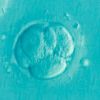 +18 +1
+18 +1Experts Conclude Genome Editing in Human Embryos Still Too Risky
The Third International Summit on Human Genome Editing has concluded, and experts have agreed that human genome editing is not ready The Third International Summit on Human Genome Editing has concluded, and experts have come to a consensus that, “Heritable human genome editing remains unacceptable at this time,” according to their statement.
-
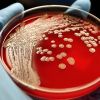 +31 +1
+31 +1Scientists develop new compound which kills both types of antibiotic resistant superbugs
Researchers at the University of Sheffield have developed a new compound that is able to kill both gram-positive and gram-negative antibiotic-resistant bacteria. Gram-positive and gram-negative bacteria have different cell wall structures, but the new antibiotic compound is able to pass through the cell wall of both forms of bacteria and then bind to the DNA.
-
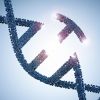 +3 +1
+3 +1Small Protein, Big Breakthrough for CRISPR Gene Editing
A new protein opens doors for gene editing by gaining access to hard-to-reach areas of the genome.
-
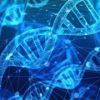 +27 +1
+27 +1Creating an Artificial Energy Source To Power Muscles
Marrying biology and engineering permits the design or redesign of biological molecules and complex systems that do not exist naturally in the world – the applications of which are unprecedented.
-
 +4 +1
+4 +1First Human Clinical Trial Finds CRISPR Gene-edited Cells Safe and Durable for Cancer Therapy
Scientists report positive safety and durability results from the first U.S. test of CRISPR gene editing in human patients with advanced cancer. Technology Networks spoke to the researchers to find out more.
-
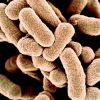 +22 +1
+22 +1Scientists Created Bacteria With a Synthetic Genome. Is This Artificial Life?
In a milestone for synthetic biology, colonies of E. coli thrive with DNA constructed from scratch by humans, not nature.
-
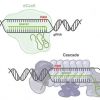 +16 +1
+16 +1New CRISPR Class Expands Genetic Engineering Toolbox
Biomedical engineers at Duke University have used a previously unexplored CRISPR technology to accurately regulate and edit genomes in human cells.
-
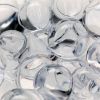 +19 +1
+19 +1CRISPR cuts turn gels into biological watchdogs
Wunderkind gene-editing tool used to trigger smart materials that can deliver drugs and sense biological signals.
-
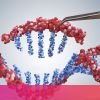 +20 +1
+20 +1CRISPR is less like molecular scissors and more like molecular malware
Last week I read an article about CRISPR, the latest tool scientists are using to edit DNA. It was a great piece – well researched, beautifully written, factually accurate. It covered some of the amazing projects scientist are working on using CRISPR, like bringing animals back from extinction and curing diseases.…
-
 +10 +1
+10 +1Pig-Pen Effect: How our "personal pollution clouds" affect indoor air quality
New research has found that each of us is regularly producing our own personal cloud of pollutants, affecting indoor air quality. But not the way you think. The team found that oils on our skin and clothes are reacting with ozone in the air, producing a range of volatile and semi-volatile substances
-
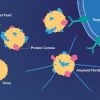 +7 +1
+7 +1Coat of proteins makes viruses more infectious and links them to Alzheimer's disease
New research from Stockholm University and Karolinska Institutet shows that viruses interact with proteins in the biological fluids of their host which results in a layer of proteins on the viral surface. This coat of proteins makes the virus more infectious and facilitates the formation of plaques characteristic of neurodegenerative diseases such as Alzheimer's disease.
-
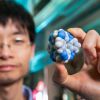 +20 +1
+20 +1IU researchers synthesize a molecular 'cage' to trap chloride salts
The technology could address the seepage of this pollutant into freshwater systems, which is a threat to drinkable water across the globe.
-
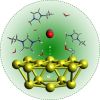 +20 +1
+20 +1Artificial photosynthesis transforms carbon dioxide into liquefiable fuels
Chemists at the University of Illinois have successfully produced fuels using water, carbon dioxide and visible light through artificial photosynthesis. By converting carbon dioxide into more complex molecules like propane, green energy technology is now one step closer to using excess CO2 to store solar energy—in the form of chemical bonds—for use when the sun is not shining and in times of peak demand.
-
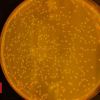 +12 +1
+12 +1Artificial life form given 'synthetic DNA'
UK scientists have created an artificial version of the stomach bug E. coli that is based on an entirely synthetic form of DNA.
-
 +8 +1
+8 +1New Lifelike Biomaterial Self-Reproduces and Has a Metabolism
Life demands flux. Every living organism is constantly changing: cells divide and die, proteins build and disintegrate, DNA breaks and heals. Life demands metabolism—the simultaneous builder and destroyer of living materials—to continuously upgrade our bodies. That’s how we heal and grow, how we propagate and survive.
-
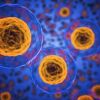 +7 +1
+7 +1How CRISPR Gene Editing Trials on Humans Were Finally Approved in the US
For years, we have speculated about the promise that CRISPR — a gene editing tool that can precisely change DNA sequences — holds to treat human disease. This week, our high expectations were put to the test. On Wednesday, reports confirmed that the United States embarked on a new clinical trial using CRISPR to treat human cancer patients — the first of many more to come.
-
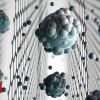 +4 +1
+4 +1Graphene sieve makes seawater drinkable
A UK-based team of researchers has created a graphene-based sieve capable of removing salt from seawater. The sought-after development could aid the millions of people without ready access to clean drinking water. The promising graphene oxide sieve could be highly efficient at filtering salts, and will now be tested against existing desalination membranes. It has previously been difficult to manufacture graphene-based barriers on an industrial scale.
-
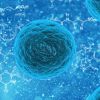 +22 +1
+22 +1CRISPR gene editing makes stem cells 'invisible' to immune system
UC San Francisco scientists have used the CRISPR-Cas9 gene-editing system to create the first pluripotent stem cells that are functionally "invisible" to the immune system, a feat of biological engineering that, in laboratory studies, prevented rejection of stem cell transplants. Because these "universal" stem cells can be manufactured more efficiently than stem cells tailor-made for each patient—the individualized approach that dominated earlier efforts—they bring the promise of regenerative medicine a step closer to reality.
-
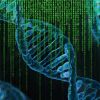 +15 +1
+15 +1AI Created in DNA-Based Artificial Neural Networks
Mention artificial intelligence (AI) or artificial neural networks, and images of computers may come to mind. AI-based pattern recognition has a wide variety of real-world uses, such as medical diagnostics, navigation systems, voice-based authentication, image classification, handwriting recognition, speech programs, and text-based processing.
-
 +22 +1
+22 +1Scientists Hack A shortcut for Photorespiration in plants, Boosting Crop Growth by 40 percent
Increasing the yield of crop plants is a major facet of increasing food security, and one way to do this is from understanding plant biology which begins with the process of photosynthesis. Photosynthesis, popularly termed as the “green engine of the earth”, is the process by which plants convert light energy into chemical energy that is later released to fuel the plant activities such as growth. If we want to keep the planet and its growing population running in a sustainable way, we will need plants to produce far more food, energy and applicable biomass than they do today.
Submit a link
Start a discussion




















